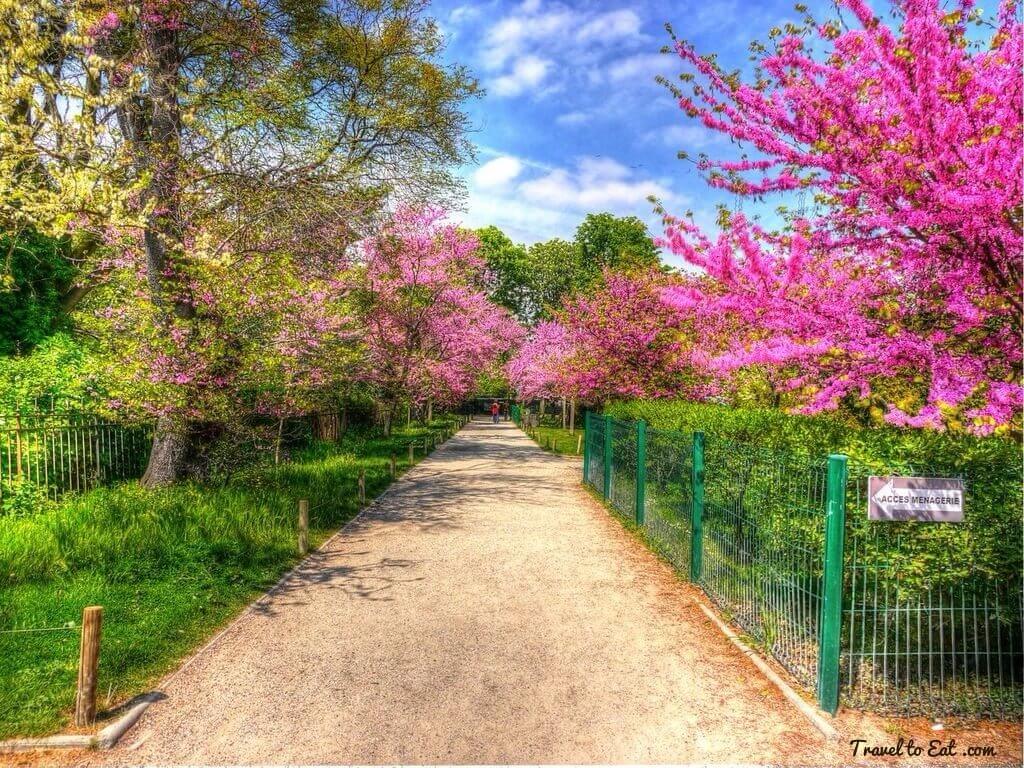
Another nice day in Paris and today we decided to visit the Jardin des Plantes . Founded in 1626, Jardin des Plantes was first established as a royal garden of medicinal plants and wasn't open to the general public until 1650. It was designed and planted by Guy de La Brosse, the physician of Louis XIII. The grounds of the Jardin des Plantes includes four galleries of the Muséum: the Grande Galerie de l'Évolution, the Mineralogy Museum, the Paleontology Museum and the Entomology Museum. In addition to the gardens there is also a small zoo, founded in 1795 by Bernardin de Saint-Pierre from animals of the royal menagerie at Versailles.
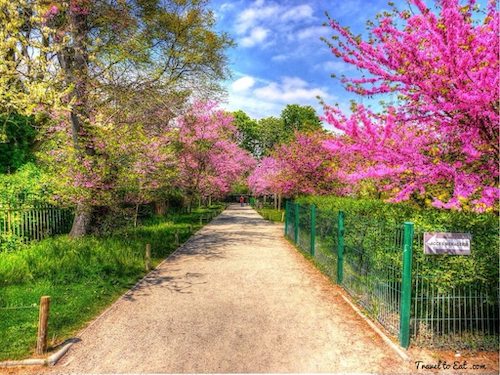
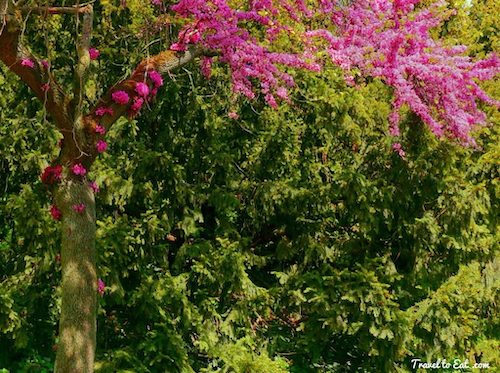
These are Cercis siliquastrum, commonly known as the Judas tree, a small deciduous tree from Southern Europe and Western Asia which is noted for its prolific display of deep pink flowers in spring. They are pretty common in the Paris parks. There is a long-standing myth that Judas Iscariot hanged himself from a tree of this species. This belief is related to the common name “Judas Tree” which is possibly a corrupted derivation from the French common name, Arbre de Judée meaning tree of Judea, referring to the hilly regions of that country where the tree used to be common. The deep pink flowers are produced on year-old or older growth, including the trunk, in late spring (cauliflory). The leaves appear shortly after the first flowers emerge.
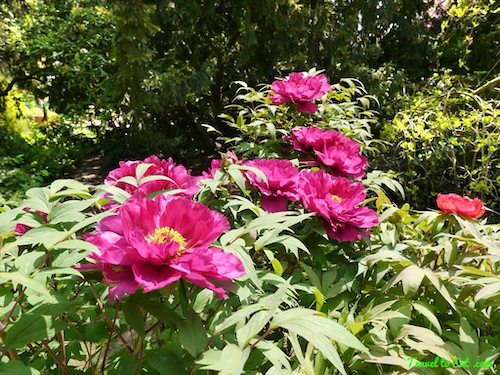
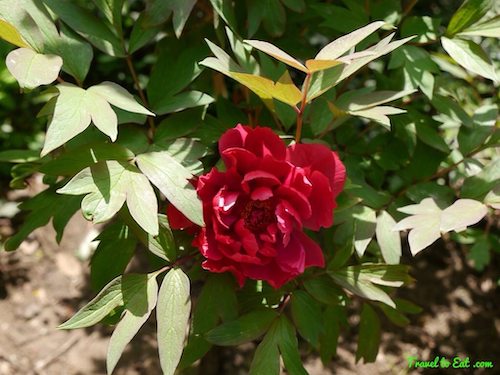
The peony was a symbol of beauty and love in ancient China. Grown not only for its beauty but also for its medicinal properties, the peony has been appreciated for over two thousand years. In the region of Tibet, in which there are native shrub species, it occupies an important place in the decorative arts. Symbol of wealth and social success in China, it is one of the three imperial flowers of Japan, with cherry and lotus. The Peonies presented in this garden were donated by the Japanese city of Yatsuka, famous for its talented horticulturists. A gift whose value is best appreciated if you know that it takes between 20 and 25 years to create a new cultivar.
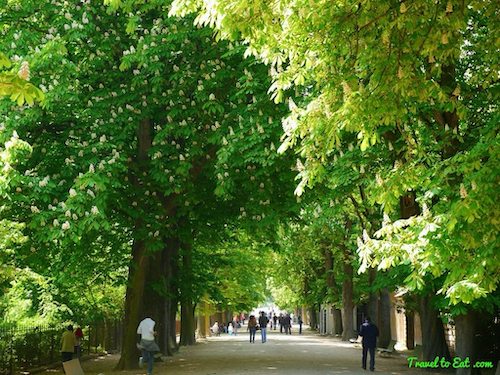
They have the long shaded passageways we have come to associate with Parisian parks and Paris in general. The trees are chestnut trees in bloom and since they are found everywhere in Paris there are little white cones all over town.
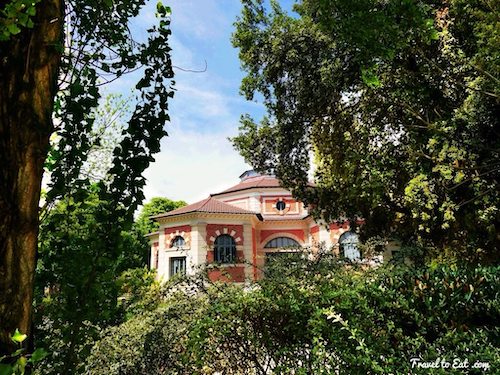
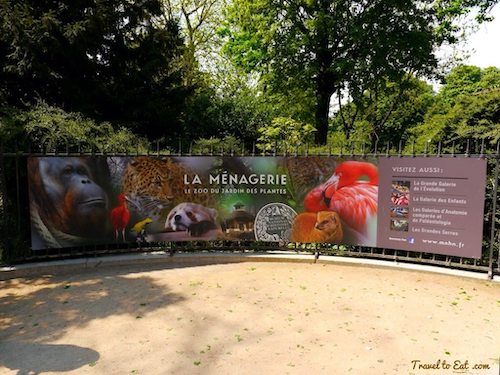
They have a zoo, which takes up about half the park. We didn't go on our visit this time since we will be going with some friends in about 3 weeks.
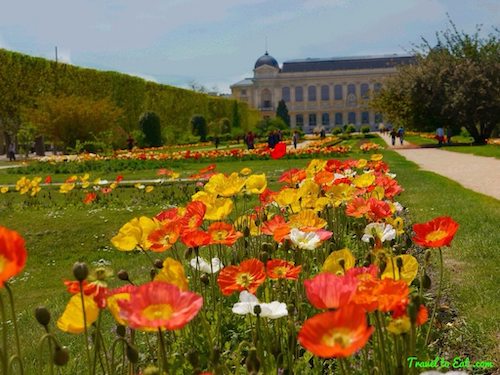
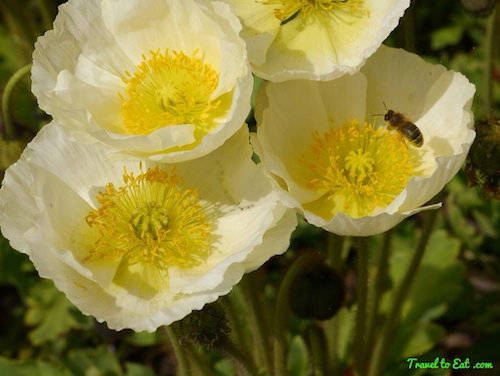
In the center of the garden, Alpine Poppies were out in full bloom, and the bees were in love. Papaver alpinum, the Alpine poppy, is a poppy found in the Alps, particularly Austria. By the way, the square trees on the side of the promenade are sycamores which have been Pollarded. Pollarding Trees is done to and also a matter of tradition. Pollarding of trees began hundreds of years ago (in Holland) as a way of producing annually renewed stove wood and weaving wood for baskets and brooms. The look of pollarded trees became accepted as a normal appearance of trees, so pollarding continues. Only a few varieties of trees tolerate pollarding as a management method like a Sycamore and Linden allow the growing of trees in smaller streetscape settings.
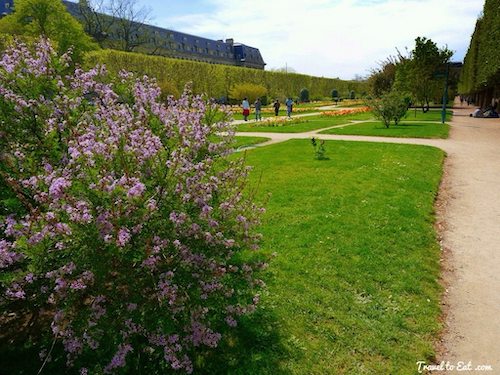
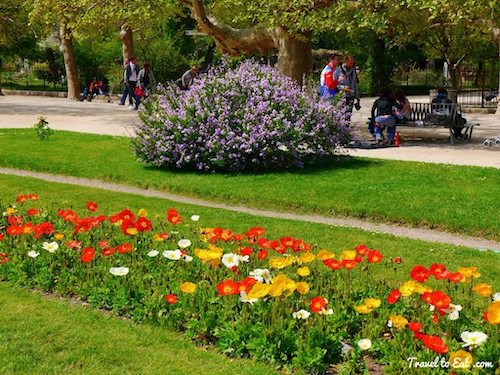
They had this beautiful lilac bush, which I believe is a Syringa persica or Persian Lilac. The term French lilac is often used to refer to modern double-flowered cultivars, thanks to the work of prolific breeder Victor Lemoine. As a result of his accomplishments, the term French lilac has come to mean all cultivars of the common lilac that have double flowers, regardless of their origin. This particular one is the single flower type. The genus name Syringa is derived from Greek syrinx, meaning a hollow tube or pipe, and refers to the broad pith in the shoots in some species, easily hollowed out since ancient times to make reed pipes and flutes.
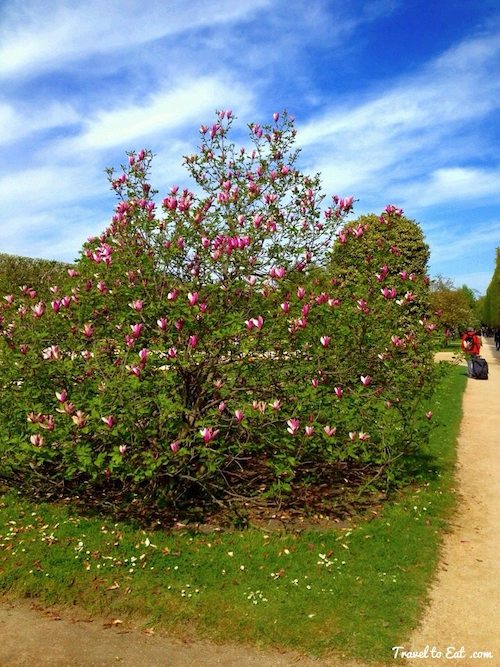
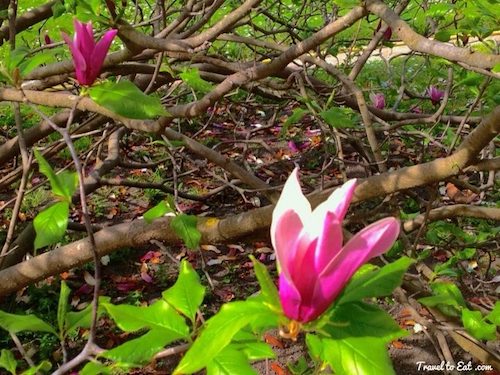
This is a Kosar-de Vos Hybrid Magnolia tree, a deciduous magnolia tree with purple flowers that grows to 12 feet high and 15 feet wide. This is one of the few magnolia trees with purple flowers. It starts flowering at 4-5 years of age, so it pays to buy a more mature specimen if you want one for yourself.
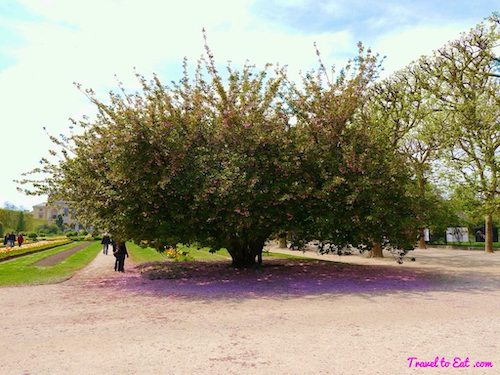
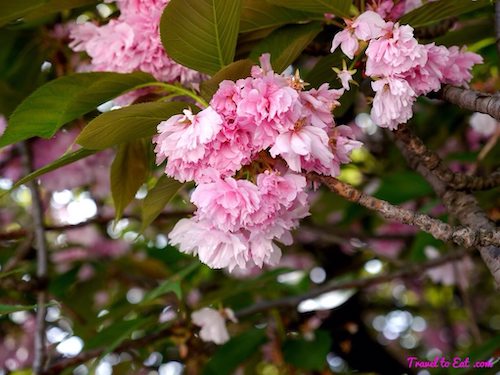
This is a Japanese cherry tree slightly past it's prime, notice all the flowers on the ground. Prunus serrulata or Japanese Cherry (Cerisier du Japon, Kanzan), also called Hill Cherry, Oriental Cherry or East Asian Cherry, is a species of cherry native to Japan, Korea and China and is used for its spring cherry blossom displays and festivals. This version, Kwanzan Cherry has double-pink, very attractive flowers.
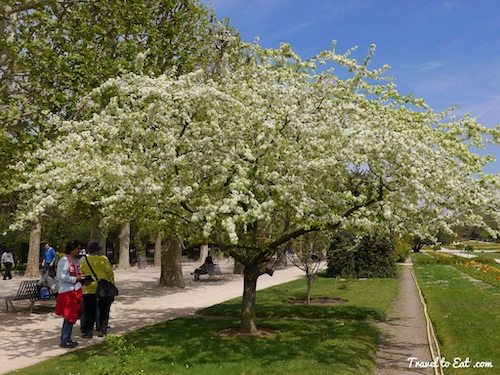
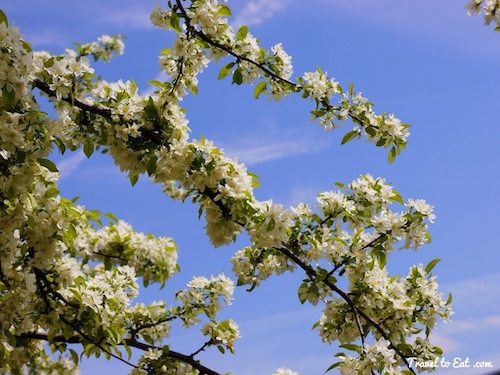
I just love the way these white blossoms look against the blue sky. This is a regular Prunus serrulata or wild type with five petals. This could also be a Prunus avium, which means bird cherry in Latin. Although cultivated or domesticated varieties of Prunus avium (sweet cherry) didn’t exist in Britain or much of Europe, the tree in its wild state is native to most of Europe, including Britain. Evidence of consumption of the wild fruits has been found as far back as the Bronze Age at a Crannog in County Offaly, in Ireland.
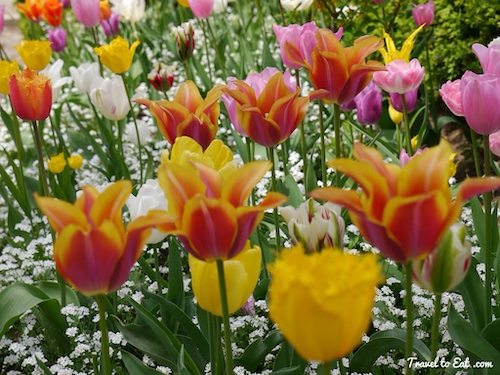
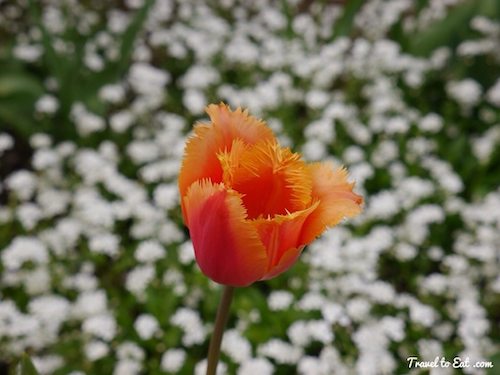
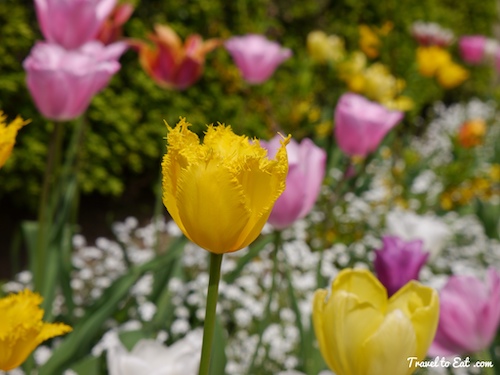
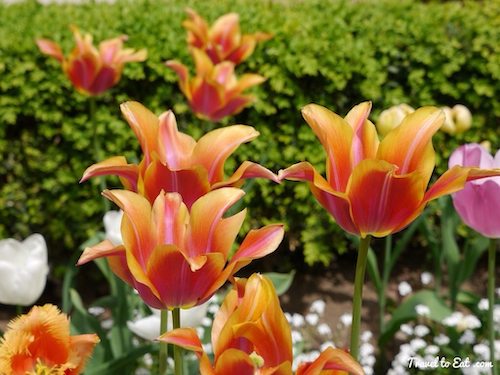
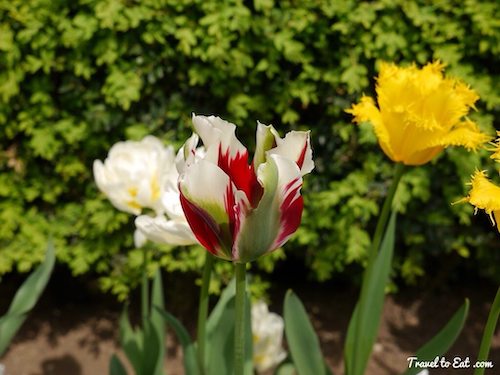
They had a small but very beautiful collection of tulips. I am going to close here, take a visit to the Jardin des Plantes for the garden, the zoo and also for a selection of museums including dinosaurs, the kids will love it and you will too. What I presented here is a snapshot of the garden, throughout the spring and summer different things blossom and there are new plantings. For instance they have a great rose garden.
References:
Jardin des Plantes: http://www.jardindesplantes.net/

